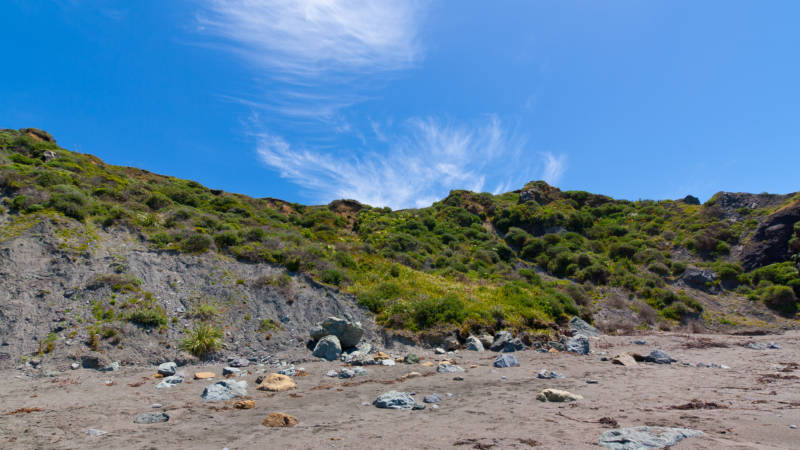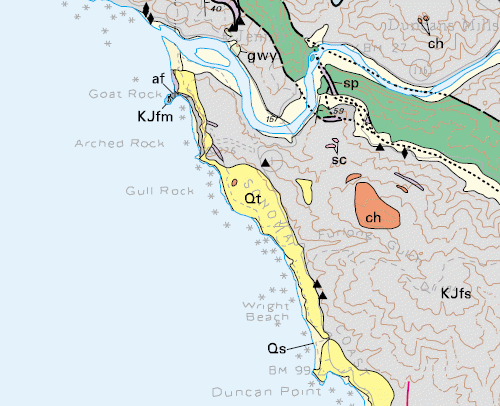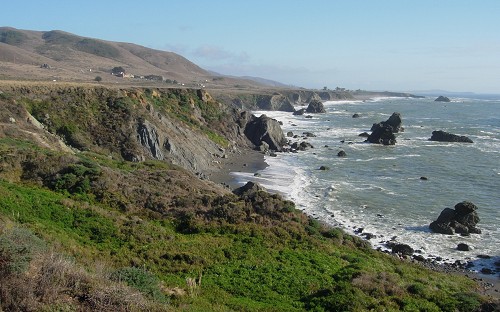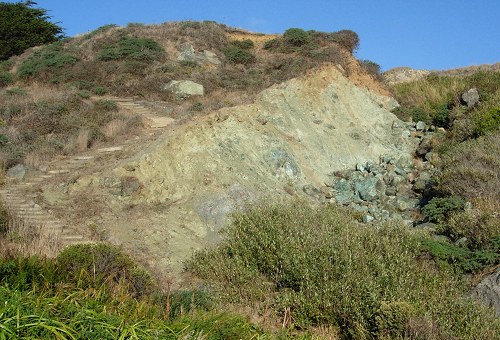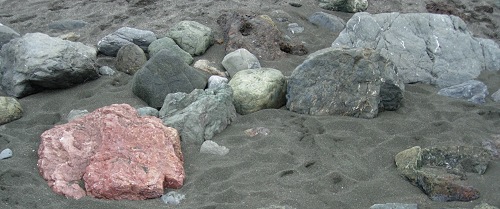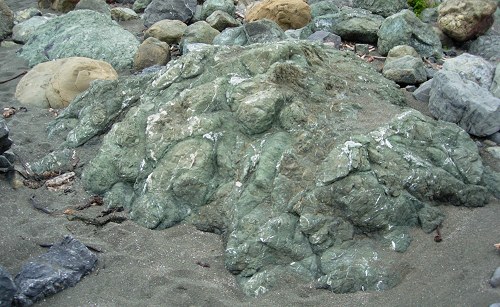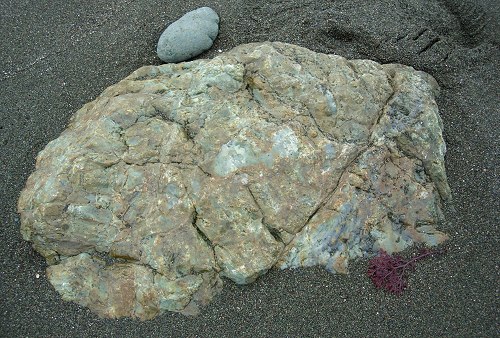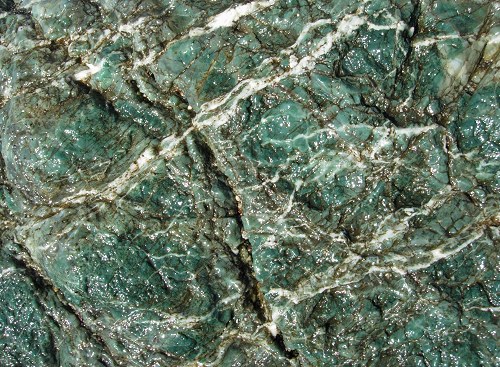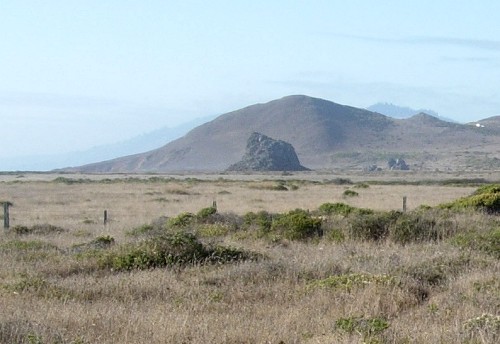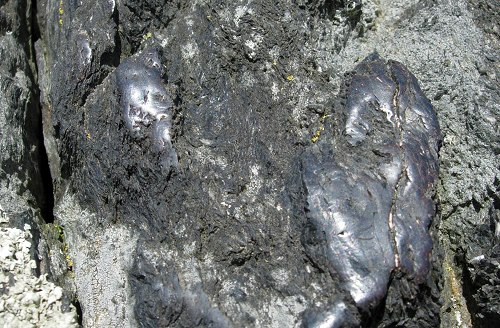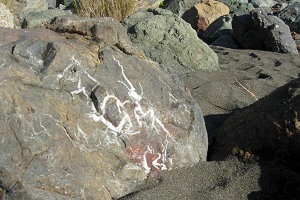
One of California's most distinctive and mysterious bodies of rock is well exposed at Shell Beach, north of Bodega Bay in Sonoma County. Photos by Andrew Alden.
A big swatch of the Coast Range is a set of rocks that once baffled generations of California geologists. It's a dog's breakfast of different things, most of them familiar in the region, mixed together with no pattern that anyone could make sense of. The geologists who explored California were no slouches, but all they could do was to map these suites of rocks in a catch-all category called Franciscan melange.
Around 1970 the new theory of plate tectonics found just the place for Franciscan melange, and Shell Beach is just the place to ponder and admire it. I've made several visits there and don't recall any shells—maybe a better name for it is Melange Beach. And right nearby is another mystery from the ice ages. For anyone into geology, Shell Beach is a great workout.
Melange, we now know, is what happens to rocks in subduction zones, which is where one tectonic plate plunges beneath another. Before the San Andreas fault began carrying coastal California sideways to the north, the plate west of us was being subducted directly eastward against North America. (A remnant, called the Juan de Fuca plate, is still doing that off the Pacific Northwest.) Rocks and sediments caught between the plates were mixed and tumbled like snow in front of a snowplow. And that's what melange represents, and that's how the Franciscan got so scrambled. Shell Beach shows us the whole range of the Franciscan in one compact site.
First let's get oriented on the geologic map (from U.S. Geological Survey map MF-2402).
